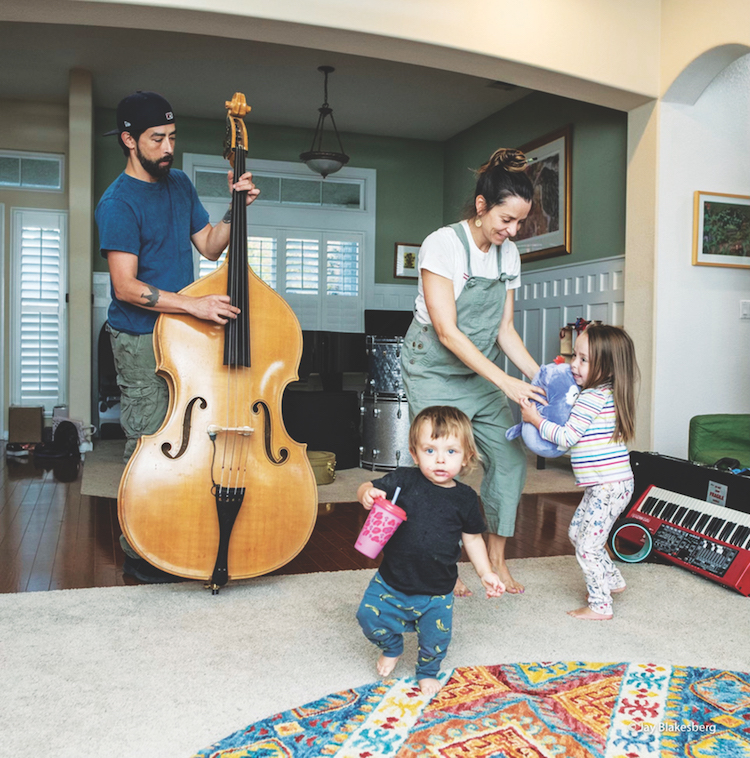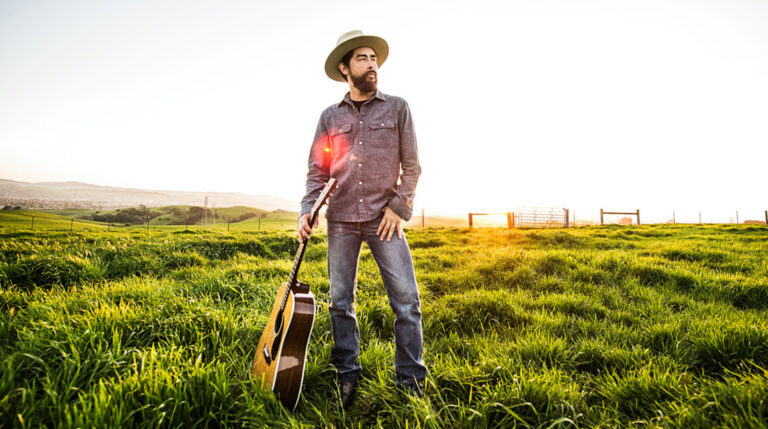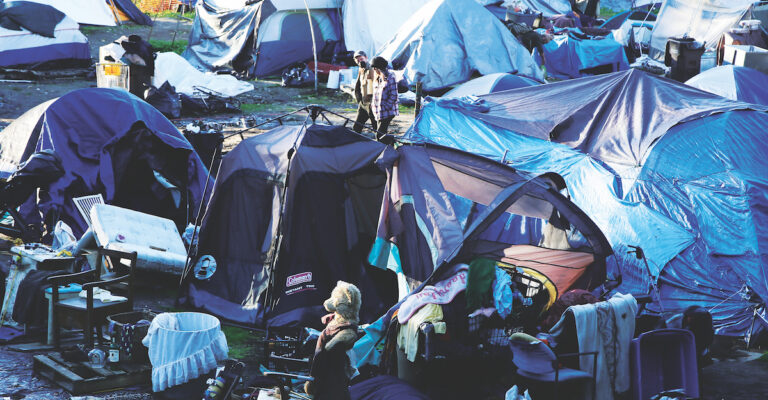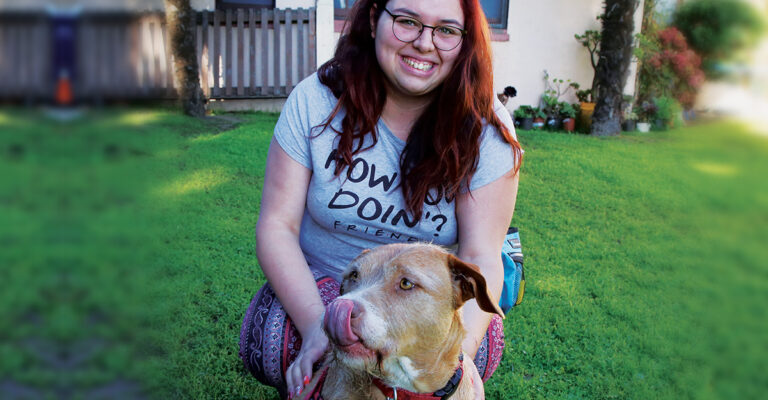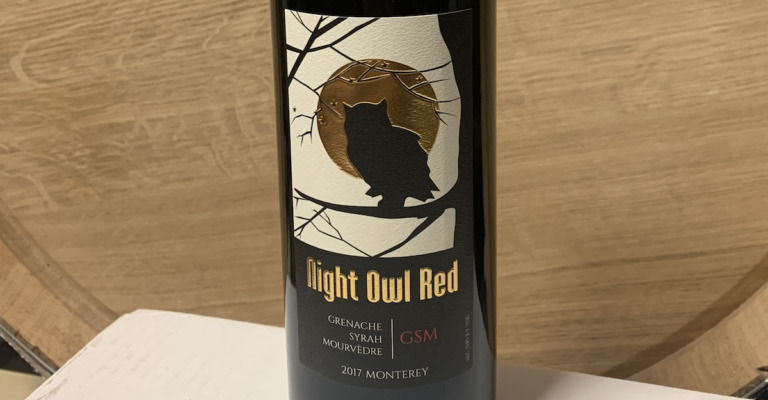On Dec. 13, Greg Pepping watched from his office window as rain poured down on the homeless encampments situated along the San Lorenzo River. As the river steadily rose, it became clear to Pepping that the tents hugging the river’s banks were at risk of being flooded and washed down the river.
“I watched the river rise and swallow up people’s belongings,” says Pepping. By evening, the river had flooded the encampment in the Benchlands, where an estimated 200 unhoused people live.
Pepping is the executive director at the Coastal Watershed Council, and has been working for more than 12 years to protect and transform the San Lorenzo River. He walked through the encampment in the afternoon, as the river was rising up the bank.
“People were miserable,” says Pepping, “muttering in frustration about their situation, trying to remove their valuable things and keep stuff dry.”
The atmospheric river’s touchdown on the longstanding homeless encampment was yet another black eye on the city’s response to the homelessness crisis. This time, the news and photos from the event went viral, landing on the front page of the Los Angeles Times and on international news sites, and sparking intense debate on social media.
The city had warned those living in the lower Benchlands of upcoming rain three days before the storm pounded the Central Coast, according to city spokesperson Elizabeth Smith.
“We didn’t know what the impact of those rains was going to be. But just as a safety precaution, we told them, ‘You might want to evacuate, and you might want to go to a different spot,’” says Smith. “On Sunday, the National Weather Forecast had the storm going to the south of Monterey Bay, and so we have not done any sort of mandatory evacuation. By Monday morning, the National Weather Service changed their forecasts.”
An estimated 50 people went to the city’s evacuation site at the River Street Garage on Dec. 13, but there was no other emergency indoor shelter in place. The Armory Shelter used to serve as an emergency shelter for the unhoused, but during the pandemic it transitioned to a full-time 24/7 shelter that has no room for new occupants. Some people tried to relocate to San Lorenzo Park, but were threatened with fines on the basis of a federal judge ruling in March that allowed the city to restrict overnight camping in the park.
Smith also said city workers had been helping people on the lower Benchlands move their belongings throughout the weekend leading up to the storm. But even if they moved to a new location, with no city storage available for their items, rain damage would still be inevitable.
The disaster at the Benchlands is not only a humanitarian issue, says Pepping—all the debris that washed into the river will have environmental consequences, as well.
“We have to keep people safe. And there’s a river to consider. The river doesn’t matter more than people, but the river matters,” says Pepping. “The debris that washed into the river is adding to a problem that we already all know is quite bad. Some of the trash included needles, and that’s on our beaches.”
City Parks and Recreation Director Tony Elliot says that the city took preemptive measures to try and clean up litter, and also has teams of people cleaning up in the storm’s aftermath.
But Pepping says the city has legal obligations to protect the river, and wonders if last week’s storm and future flooding will make the city vulnerable to a lawsuit.
“I would expect the city to be exposed to illegal liability with some of the regulatory agencies and the [Monterey Bay] sanctuary for the pollution that they’re allowing,” Pepping says.
Rain Ahead
In the coming weeks, the weather forecasts several days of rain. The lower Benchlands risk flooding again, and the city has no indoor shelter available to which people can relocate. The plan, according to Smith, is to direct people to Depot Park and encourage them to relocate to higher ground along the upper Benchlands.
The good news: Homeless services are set to receive an influx of aid, following a Santa Cruz City Council decision on Dec. 14. Elected leaders voted to reach into the city’s federal aid and give $4.2 million to homeless shelters and programs.
The money comes from President Biden’s American Rescue Plan Act (ARPA), funds that were distributed to city and state governments across the nation to help local jurisdictions recover from the economic toll of Covid-19. In total, the city will receive around $14 million in ARPA funding, given in two allotments.
The ARPA money will be used to set up two transitional camps, one at 1222 River St. and one at a site yet to be determined, with a goal of moving people out of the Benchlands. The programs are slated to open in January, according to the city’s Homeless Manager Larry Imwalle.
Most of the money will go toward expanding services at the current shelter at the National Guard Armory, to provide 24/7 staffing to help during emergencies like the recent flooding. Some money will also be used to establish a storage facility for people’s belongings.
Although the City Council voted unanimously in support of using the ARPA funds for homeless services, it was divided on the details of the programs that the money would go toward. City Councilmembers Sandy Brown and Justin Cummings worried about the large sum of money being given to opaque plans.
“It sounds like there’s certain things in what’s before us that are not fully solidified … that’s something I am concerned about in terms of allocating close to $5 million,” said Cummings.
Regardless, the money will help expand current services that the city desperately needs, especially during the winter season which can be deadly for those living out in the elements.
On Tuesday, Housing Matters, the county’s Homeless Persons’ Health Project, Wings Homeless Advocacy and The Salvation Army held the annual homeless memorial ceremony. It recognized the 94 people experiencing homelessness that died this year—17 more than the year prior and the most in the past 23 years.
“Rains like this happen every year,” said a person who identified themselves as Sabina during the Dec. 14 City Council meeting. “You created this crisis. You had months to come up with a plan.”
Countywide Conundrum
Much like Santa Cruz, the city of Watsonville is facing a homeless situation related to the recent rains that it was woefully unprepared for.
When a cleanup of the Pajaro River levee on the Monterey County side of the embankment displaced dozens living in the waterway, Watsonville officials did little to plan for the possibility that some of those people would cross the county border and seek refuge in Santa Cruz County’s southernmost city.
So when a temporary restraining order put in place by a federal judge was hours away from expiring, and the atmospheric river doused the Pajaro River, members of the Pajaro/Watsonville Homeless Union say they had no other choice but to leave the levee and set up camp in plain sight.
Some 25 people are now staying in a parking lot encampment that they say is a temporary warming center needed to keep them safe during the brutally cold winter weather.
They contend, through their lawyer Anthony Prince, general counsel for the California Homeless Union, that they would leave the encampment if provided with viable shelter and services that could help them escape the cycle of poverty that has put them in their current situation. But that hasn’t happened, Prince says.
“Nobody wants to be out here. It’s cold, the rain is coming and it’s about to be Christmas,” Prince says. “What we’re asking for is indoor, safe accommodations.”
Prince, the same attorney who represented campers at the Benchlands against Santa Cruz in a recent lawsuit, was at the Watsonville camp, along with roughly 30 other people from around the county, to halt a planned cleanup that was scheduled for Sunday morning. But the cleanup never happened. Watsonville police officers instead posted notices throughout the large group of tents that said they had to vacate by Wednesday morning.
That same morning, Prince filed an injunction in federal court seeking a temporary restraining order against the city. Prince is asking the city to give the local homeless union more time to follow through on an order from a federal judge, who said it needed to work with Monterey County to move the people into shelter.
The City Council discussed the injunction in a closed session Monday evening, but not before more than two dozen people—both supporters and detractors of the camp—lambasted the elected leaders for not only failing to provide help to the group, but also allowing city staff to twice threaten to disband the encampment without offering any significant shelter options.
“[The city says] they gave people enough time to go someplace else. It’s very easy to tell people to leave, but it’s a little bit harder when you tell someone to leave with no direction of where to go,” Rita Acosta told the council Monday.
It was the second time in less than a week that the council was criticized for its response to homelessness. On Dec. 14, about a dozen people asked the council to fund an emergency warming center after a portion of the camp toppled under heavy rains during its first 48 hours.
City Councilwoman Rebecca Garcia says that there is a need for a warming center in Watsonville, and adds that the city helped organize such a center in 2018 and 2019. Thanks to federal and state funding related to the pandemic, the county provided several shelters for homeless individuals last year, but the city chose not to offer one this year because it did not have the staff or resources to maintain it, Garcia says.
“Our homeless community needs the same level of support and resources as we give to other community groups such as the disabled, seniors [and] farmworkers,” Garcia says.
Today and Tomorrow
Experts say that the only way to eradicate homelessness is to address its root causes such as housing affordability, poverty, mental health and drug addiction. Watsonville City Councilman Francisco “Paco” Estrada says solving any of those issues takes patience, persistence and community buy-in. But Estrada says that local government—and the entities that it partners with—should be able to plan for the future and address issues that arise in the short term at the same time. That’s why the recent dispute with the homeless encampment is disappointing, he says.
Although Watsonville has been at the forefront in addressing the issues that contribute to homelessness—it has, among other things, approved more than 250 low-income housing units in the last two years, kickstarted a $1.35 million initiative to create a youth job training and mentoring program, paired its police officers with mental health liaisons and started a job training program for homeless individuals with the help of a nonprofit—the current dispute with the homeless encampment largely caught the city by surprise.
Estrada did not cast blame on anyone but himself, saying that he needs to do more as a city councilman and be better at advocating for budgetary allocations from the county and city that would allow Watsonville to address homeless issues more quickly. The system that is supposed to catch those on the verge of falling into the deepest recesses of society failed once again, he says.
“And that’s the thing that breaks my heart the most,” he says. “There are people that I think can be helped, and are not being helped.”
But Garcia and Estrada, however, say there’s hope for the future. Watsonville leaders are set to talk with county officials about what they can do to address homelessness in their city later this month. They will discuss, Garcia says, the need for a Watsonville warming center, and the next steps in addressing prevention, intervention, suppression and funding. Both councilmembers say they hope they can address the big issues surrounding homelessness as well as the immediate needs facing the homeless community this winter.
“The system, I think at all levels, has been kind of a big failure in this situation,” Estrada says. “I know there’s been people working to have services available for the homeless, but then, because of one reason or another, which really has to do with this whole system, it fails. But that doesn’t mean we can’t try to change it.”




